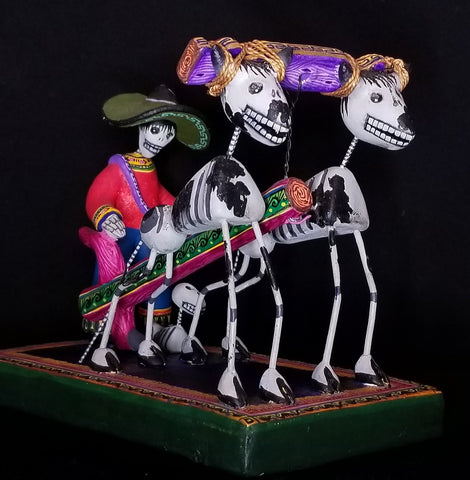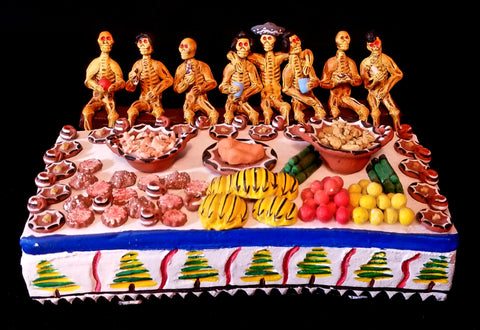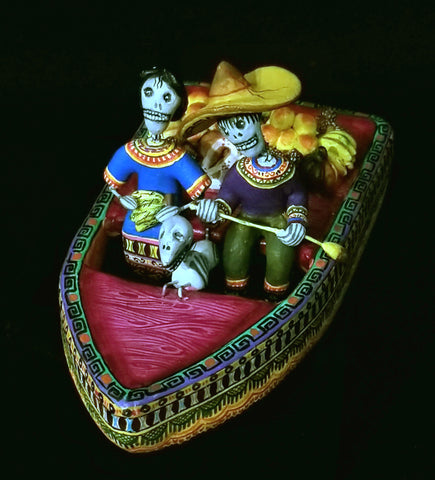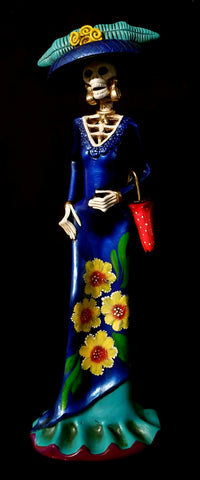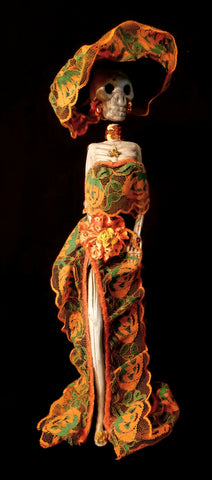Dia de los Muertos
This holiday is a perfect example of the complex heritage of the Mexican people. The beliefs of today's Mexican are based on the complicated blended cultures of his ancestors, the Aztec and Maya and Spanish invaders, layered with Catholicism. The origins of the Days of the Dead reach into the ancient history of Europe and Mexico. When the Spaniards arrived in Mexico they encountered two-month celebrations honoring death, the fall harvest and the new year. For more than 500 years, the goddess Mictecacihuatl (Lady of the Dead) presided over Aztec harvest rituals using fires and incense, costumes of animal skins, images of their dead and offerings of ceramics, personal goods, flowers, foods and drinks. While the church attempted to transform the joyous celebration to a suitably tragic image of death and a serious day of prayer focusing attention and reflection on the saints and martyrs, the people of Mexico did not fully adopt the early priests' ideas, and by keeping their familiar ceremonies, All Saint's Day and All Soul's Day evolved into the celebrations that today honor the dead with color, candles and joy. *text excerpted with permission by author Judy King.
Here is an amazing collection of muertos in every imaginable medium: wood, ceramic, jewelry, nichos, plaster, coconut gourd, papel picado, tin and textiles.

